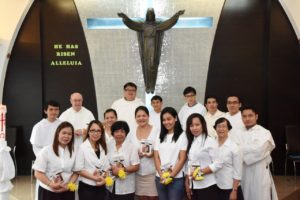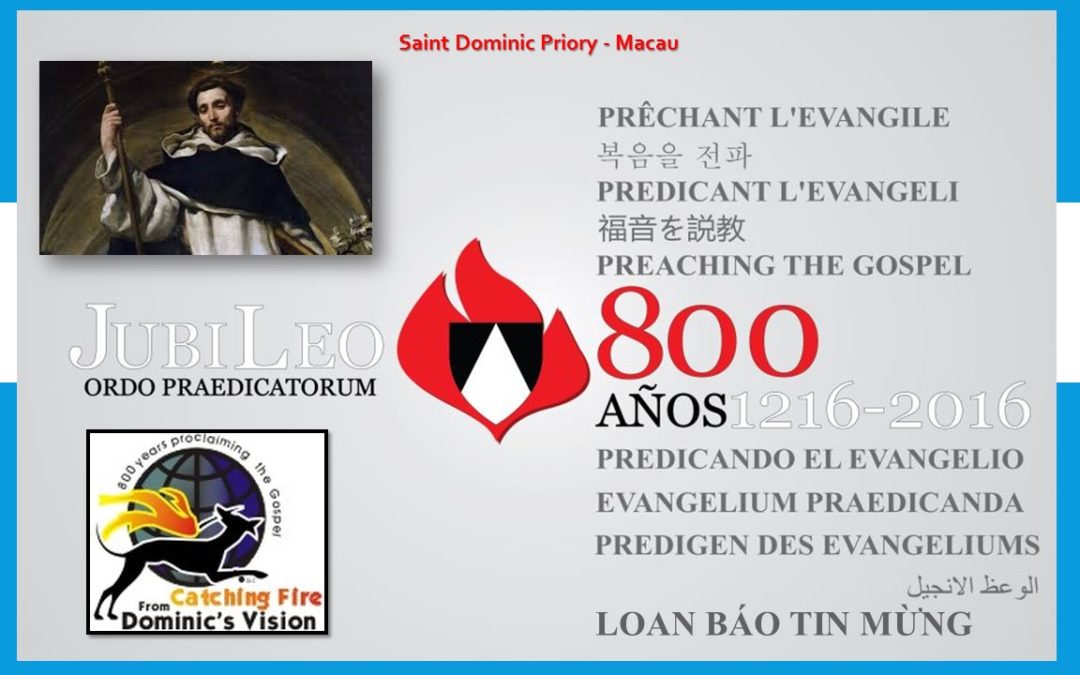
The 800 Jubilee of the Order of Preachers (1216-2016): MEANING AND SIGNIFICANCE (part 1)
Fausto B. Gómez
In our life, we always remember as individuals and as members of a community, or family important and significant events, such as a birthday, an anniversary, a silver or golden jubilee of priesthood, of marriage, of religious life, the centennial or in December 2016 the 800th Confirmation Anniversary of the order of preachers.
      As a family, the family of Saint Dominic, we recall our birth to rejoice, to give thanks, to be sorry, to renew ourselves, and above all, to show our love for our Dominican vocation. The celebration is not just an occasion to look at our umbilical cord and to clap for the great works Dominicans have done through eight centuries, or just to be sorry for the dark spots in our history – and both are to be done. One hopes and prays that the celebration will be more than a sort of transient fireworks (academic programs, liturgical celebrations, “pilgrimages†to the Dominican places in France, Spain, and Italy). It will certainly be a time to praise God and rejoice: laudare, benedicere and praedicare; a time to be grateful, too.[1] Above all, it is a time for a deeper conversion to God, to others and in a special way to the needy and poor. Jubilee 800 is a unique opportunity to see how we can be creatively faithful to our charism, to preaching the Word to our world.
We wish to reflect first, on the meaning of Jubilee, and second, on the essential significance of Jubilee 800 for the Dominican Family, in particular for the brothers of Our Lady of the Rosary Province
1. MEANING OF JUBILEE
In this section we consider first the Jubilee in the Church, second, the Jubilee in the Order, and third the Jubilee in the Province of Our Lady of the Rosary.
Jubilee in the Church
In the context of the celebration of Jubilee 800, it is appropriate, I believe, to remember the Jubilee Year in Israel and in the Church, and learn from their celebrations and teachings.
We go back, then to the Jubilee of the people of Israel. According to the Old Testament, the Sabbatical Year (every seven years), the Jubilee Year (the 50th year) was a year of God’s favor (Is 61:1-3), a time of great joy (iubilaeum) and a time for change and renewal. It is a time to going back to original justice, when “every one of you shall return to your property and every one of you to your family†(Lev 25:10). The Jubilee Year implied a revolutionary change: resting of the land, restoring the land to its previous owners, recalling the debt and releasing slaves (Ex 23:10-11; Lv 25:1-55; cf. Dt 15:1-18). In this context, Pope Francis comments that the law of the sabbatical year was “an acknowledgment that the gift of the earth with its fruits belongs to everyone.â€[2] The God of Israel asked the Israelites – and continues asking us – few things: “Only this, to act justly, love tenderly and walk humbly with the Lord†(Mi 6:8).
The Hebrew Jubilee was followed by the “year of grace†proclaimed by Jesus at the beginning of his messianic mission when recalling the text of Isaiah: “The year of the Lord is on me for he has anointed me to bring the good news to the poor. He has sent me to proclaim liberty to captives, sight to the blind, to let the oppressed go free, to proclaim a year of favor for the Lord.†This text, Jesus said in the synagogue, “is being fulfilled today even while you are listening†(Lk 4:18-21; cf. Is 61:1-2).
The Christian Jubilee Year echoes the jubilees in Sacred Scriptures and is the year of forgiveness, grace and liberation. Since the fourteenth century, the Church celebrates a Jubilee or a Holy Year usually every twenty five years. The first Holy Year was established by Pope Boniface VIII in 1300. I remember well the 1975 Hoy Year called by Blessed Pope Paul VI and named the year of Renewal and Reconciliation. I remember, above all, the 2000 Jubilee Year of the Incarnation of Jesus called by John Paul II. A few years earlier, the saintly Pope had issued an Apostolic Letter on the Jubilee 2000, Tertio Millenio Adveniente which is still fruitful reading. Likewise, his Tertio Millennio Ineunte. It is helpful for us to recall the words of St. John Paul II regarding the celebration of the Great Jubilee 2000: “The primary objective of the Jubilee is the strengthening of faith and of the witness of Christians. It is therefore necessary to inspire in all the faithful a true longing for holiness, a deep desire for conversion and personal renewal in a context of ever more intense prayer and of solidarity with one’s neighbor, especially the neediest.†More specifically, St. John Paul II added that the objectives of the Jubilee 2000 are growth in the theological virtues, time for thanksgiving, penance and forgiveness, and for a New Evangelization.[3]
Pope Francis has convoked a new Holy Year, the Jubilee of Mercy which opened on December 8 (2015), the Feast of the Immaculate Conception and closed on November 20 (2016), the Sunday of Christ the King. The Jubilee Year of the Order of Preachers is also – as convoked by Pope Francis – the Year of Consecrated Life, which opened on November 29, 2015, First Sunday of Advent, and closed on February 2, 2016, the day of the Presentation of the Lord in the Temple. In the Year of Consecrated Life, Pope Francis encourages all consecrated persons to look at religious life as an encounter with Christ: “Community life and community apostolate are incentives towards a deeper union with the Lord in charityâ€[4] Certainly, the Jubilee 800 deepest aim is a deeper union with Christ, the Master Preacher.
 Jubilee 800 in the Order
The Order of Preachers (the Dominicans) was founded by St. Dominic of Guzman (1174-1221). It was confirmed as a local religious Order by Pope Honorius III on December 22, 1216 (date of the Bull of Confirmation “Religiosam vitamâ€). The Jubilee Year properly speaking is being celebrated from November 7, 2015 (Feast of All Saints of the Order) to January 21, 2017 (the date of the Bull Gratiarum omnium largitori of Pope Honorius III where the Pope confirms the Order as a global Order). Pope Honorius III therefore confirmed the Order two times:  in the first letter of confirmation, Dominic and companions were allowed and encouraged to preach locally, in the diocese of Toulouse (December 22, 2016); in the second letter of confirmation, the friar preachers were given permission to preach throughout the world (January 21 2017).[5]
The Dominican Order is made up in 2015 of fifty independent institutions: Provinces (38), General Vicariates (9) and Vice-Provinces (3). The overall number of Dominican brothers is still slightly – very slightly – decreasing in 2014 compared with the three previous years. The trend one may presume is little by little improving, particularly in Africa and Asia, but also in some Provinces of the Americas and in France. Currently the brothers of the Order of Preachers (as of December 2014) is composed of 5.589 members (plus 36 bishops). The five (5) Provinces with the biggest numbers overall are: first, Polonia (439); second, Vietnam (366); third Spain (318), fourth St. Joseph, USA (309), and fifth France ((306). Our Province of Our Lady of the Rosary is number six (261).[6]
Through 2016, the Order celebrates the eighth centenary of the year when our Father Dominic began in the city of Toulouse his “community adventureâ€: living together with his first set of sixteen brothers. Earlier, in Fanjeaux, the heart of the “Country of the Cathars,†Dominic had a preaching experience first with and under Bishop Diego de Acebes, who passed away in December 1207, and later with a group of companions from 1208 to 1215. In 1206, Dominic started the foundation of Prulle, which began with a small group of women converted from heresy and which became the first foundation of Dominic, the Dominican nuns.[7]
The Dominicans celebrate their 800 Foundation Anniversary under the motto: “Sent to preach the Gospel.†The Jubilee 800 is seen as truly important in the life of every Dominican and community. The Order has drawn a well detailed plan to commemorate the 800th year anniversary of the foundation/confirmation of the Order.[8] The General Chapter of Trogir, Croatia (2013) presents to us the nature of the mega-celebration and the main steps to take by way of preparation.[9] It is worthwhile to underline chapter two of the Acts of Trogir (nos. 40-49), focused on the priority of preaching and its demands upon us, including metanoia, listening to the Word, simple life style coupled with sensitivity to poor and needy, contemplative study and an apostolic life that witnesses Christ and his death and resurrection. The general program of the Jubilee 800 includes many and different activities: prayer-vigils, communal penitential celebrations, congresses, encounters, series of lectures, pilgrimages, etc. The Order recommends a common celebration of the Dominican feasts. The inauguration of the celebration of the 800 foundation anniversary took place on November 7, 2015 with a solemn para-liturgy, which was either integrated in the Mass or in morning or evening prayer.[10]
It is repeatedly underlined by the authorities of the Order that Jubilee 800 is a celebration of the entire Dominican Family and each branch is to seek out the most suitable way to participate in the celebration. Most of the celebrations are taking place at the regional and above all at the local levels: in Provinces, Vicariates, convents and houses…
Jubilee 800 in the Province of Our Lady of the Rosary
As a unit of the Order of Preachers, the missionary Province joins gratefully the celebration of Jubilee 800 and contributes modestly with its own especial events.
The Dominican Province of Our Lady of the Rosary was founded in 1587, and began to walk in Manila in July and in Macau in September of the same year. In July of 1587, the new Dominican Province inaugurated its mission in the Philippines and from Spain and the Philippines spread rapidly to different Asian countries.  From Manila, brothers coming from Spain went to different countries of Asia, including Japan, Vietnam (then Tonkin), Taiwan and China, to preach the Gospel and implant the Dominican Order. Later on our brothers went to Venezuela, Korea, Myanmar, Timor Leste, and … The journey continues! In 1968, the first Dominican Province daughter of our Province was born: Our Lady of Martyrs of Vietnam. In 1971, the second daughter of the Province was born: the Philippine Dominican Province. We are a cog in the long and wonderful chain of missionaries of our Province and of our nuns and sisters and lay faithful on the wave-length of St. Dominic.
Among the Provinces of the Order (in 2014), our Province of Our Lady of the Rosary is number six in number of members (261). Regarding the number of students, all simply and solemnly professed, our Province is number seven tied with India (41). Regarding the number of ordained priests, our Province is number six (196). We pray for vocations in the whole Order, particularly this year of the Jubilee.
Counting pre-novices (30) and novices (12), the Province of Our Lady of the Rosary counts with 302 members. It is composed of five Vicariates: the Philippines (13), Taiwan (10), Japan (18), Venezuela (44) and Spain (90). One brother (1) works in the General Curia of the Order in Rome and seven other brothers (7) are assigned to the General Vicariate of Chile (3) and the University of Santo Tomas, Manila (4). At present, the Province has ten (10) convents: four (4) in Spain, two (2) in Venezuela, one (1) in the Philippines, one (1) in Japan, one (1) in Hong Kong, and one (1) in Macau. Beside the convents, there are in the Province twenty nine (29) houses. The newest are: three (3) in China, three (3) in Myanmar, and two (2) in Timor Leste. Comparing the numbers of 2015 with the two previous years, the differences are minor. One obvious trend: the number of elderly brothers is decreasing while the number of professed brothers and young priests is increasing.[11]
As a unit of the Order of Preachers, the missionary Province joins gratefully the celebration of jubilee 800. The Provincial Chapter of Avila (2013) speaks little of the Jubilee 800. In his Letter of Approval of the Acts, the Master of the Order Fr. Bruno Cadoré does speak and underline its relevance, and likewise our Provincial, Fr. Javier Gonzalez in his letter of promulgation of the acts.[12] Later on, the Provincial Council decided on some important activities to be carried out by the Province. Moreover, the different vicariates, convents and houses of the Province are encouraged to organize their own relevant activities.
As his first general comment, the Provincial Promoter of the Jubilee 800 commented to the brothers that the Jubilee to be meaningful there must be awareness, knowledge and metanoia. To be aware: to realize individually and in community the importance and relevance of this unique celebration. To know: to deepen the knowledge of our history and stories particularly of its beginning. To change: to be truly convinced that what really matters in this celebration is the change or renewal of all the members of the Order.
Another important point that was underlined: the preparations and celebrations of the Dominican Jubilee should include members of the other branches of the Dominican Order Moreover, the Jubilee Promoters must be helped in their work by superiors, promoters of permanent formation, conventual lectors and regents of study.[13]
For our missionary Province in particular, it is important to note that celebrations of the Jubilee must favor – as recommended by the latest General Chapter – the new foundations in which the Order is birthing. Moreover, the General Chapter of Trogir recommends dialogue and solidarity with the poor, and ecumenical and interreligious dialogue.[14]
The preparations of the Jubilee in the Province started with the recitation in all communities of the Prayer of the Jubilee. By the end of October 2014, a letter on the Jubilee with the prayer was sent to all the Dominican communities of Our Lady of the Rosary. In November, 2014 all the members of the Province were invited to recite frequently the Prayer of the Jubilee and encouraged to prepare especial events related to the Jubilee. They were also invited to celebrate together the Dominican feasts beginning with December 22, 2014 and to read in community chapters 2 and 3 of the Acts of the General Chapter of Trogir: chapter 2 is on Preaching and chapter 3 on the Jubilee and its celebration.[15]
By September, the Prayer of Jubilee 800 was being prayed daily in our community in San Juan (Metro Manila). It started to be prayed daily in our St. Dominic’s Priory in Macau, from September 20, 2014. By November 7, – the opening of the Jubilee 800 celebration in the whole Order -, the Prayer was recited in most of our communities and in some communities of Dominican Sisters in the Asia/Pacific Region.
Throughout the Jubilee Year, the Province is preparing two major works. First, an ambitious history project: publication of a compendium in English of the monumental work of Fr. Pablo Fernandez, OP (+ 1992), which is being carried out by Fr. Angel Daniel Blazquez, OP. The translation of the complete work of Fr. Fernandez entitled Dominicos donde nace el sol is currently being translated into English by Professor Belen Tangco of the University of Santo Tomas, Manila.
The second major work of the Province on the occasion of the Jubilee 888 is the publication of a book on the Mission of the Province in the different places and parts of the world where its missionaries minister. This project was presented by the Prior Provincial Fr. Javier González, OP to the Provincial Council and gladly approved by all the members. It was suggested that the content of the book should not be too scientific or historical. However, and due to the variety of situations, freedom will be respected. Each Vicariate and/or convent and house will prepare a chapter of about twenty to thirty pages. Every chapter will focus on the present reality (the last fifty years more or less) of the corresponding Vicariate or Convent or House under the Fr. Provincial: the present of the mission as grounded on its past and journeying forward to its immediate future. Main questions to be answered: Who are we? What are we doing? Where do we come from and where are we going (briefly)?
Beside the special celebration of the Opening of the Jubilee in all the convents and houses of the Province, there was another significant one: the Communitarian Penitential Celebration held – as in all communities of the Order – in all the communities of the province ibn different days through the Lent of 2016.
Another major event for the Jubilee 800 in the Province of Our Lady of the Rosary is a special program of lectures and pilgrimages. The series of lectures addressed to the young priests and professed students of the Province from different countries, takes place in Avila, Spain in June 2016. The participants will join other young Dominicans and professed students from other Provinces of the Order in their pilgrimage to the Dominicans places in Spain, France and Italy.[16]
2. SIGNIFICANCE OF THE JUBILEE 800: YESTERDAY, TOMORROW, TODAY
For an appropriate celebration of the Year of Consecrated Life (2015), Pope Francis suggested the following aims: look at the past with gratitude, embrace the future with hope and live the present with passion.[17]
Those aims are usually considered in celebrations of anniversaries and jubilees. As we celebrate Jubilee 800, we also focus on our past – yesterday-, on our future – tomorrow-, and on our present – today.
Our brother Yves Congar says that Christian tradition may be symbolized by a person walking. Likewise, I suggest, Dominican life today. The person walking has one foot on the ground of the living past, and the other foot in the air, open to change and renewal, and ready to stride forward. Saint Paul advises us: “Let us go forward on the road that has brought us to where we are†(Phil 3:16).
As in the cases of the Jubilee in Old and New Testaments and in the Church, Jubilee 800 celebration goes back to our origins, looks forward to our future and commits the members of the Dominican Family to bridge past and future with passionate and creative fidelity to preaching in our times.
Yesterday: Looking to Our Past
Often the Jubilee Year or the Holy Year is presented as memory and hope. The Jubilee 800 is memory. Convoking the 2000 Jubilee, Pope John Paul II spoke of the purification of memory (by recognizing the sins of Christians in the past and in the present and being sorry for them) and of the memory of the martyrs (by remembering their witnessing for Christ). Pope Francis told the Superiors General meeting in Rome (November 29, 2013) that the Church must ask forgiveness for, and looking with shame upon, apostolic failures caused by misunderstandings in this field†(he had just mentioned Matteo Ricci as a good example). During his trip to Bolivia, Pope Francis said to the participants in the Second World meeting of Popular Movements on July 9, 2015: “I humbly ask forgiveness, not only of the Church herself, but also for crimes committed against the native people during the so-called conquest of America… I also would like to recognize the priests and bishops who strongly opposed the logic of the sword with the strength of the cross…, who defended the justice of the native peoples.†Something similar can – and should – be said of the Spanish conquest of the Philippines and of the Portuguese colonization of Macau and other.
Our memory of our past remembers our glories and our failures – without overdoing either – while underlining that gratitude is the memory of the heart. The 2014 Nobel Prize of Literature, Patrick Modiano was given the prestigious award by reason of “the art of memory,†in particular by evoking the Second World War and the German occupation in France, mixing powerfully memory, forgetfulness, guilt and identity. We go back to our origins not to visit a great museum, or breathe nostalgia but to keep alive our identity, to inflame our love for our vocation. To go back to significant places in peoples’ life, Pope Francis tells us, “is a chance to recover something of their true selves.â€[18]
Like the disciples of Jesus after his resurrection, we too go “back to Galilee†(Mt 28:1-8; cf. Mk 16:6-7; Lk 24:5-7). If Christians wish to find the Risen Lord, they have to go back to Galilee that is, to their origins and follow Jesus, who is in front of them, faithfully. Everything began there: the choice of disciples, the inauguration of the preaching of the Good News, his healing, his forgiveness, etc. We do not forget that Jesus is the center of Dominic’s life – and so must be of our life. The prophet Jeremiah tells us that God complains of those who “have no taste†for his word (Jr 6: 10).  Like the first Christian communities, we are asked to go “back to original charity†of the Churches (cf. Revelation).
We go “back to Dominic.†As we Dominicans celebrate the 800 Anniversary of the confirmation of the Order, we go back to our Founder and Father Dominic and the first Dominican communities. We go back to southern France and the other places visited by Dominic and follow him faithfully. We go back to him not to stay in the thirteenth century but to be renewed now and be like Dominic. We place Dominic at the center of our communities – his life, his mission, his charism, his simple lifestyle, his prayer life…
We go back to the founders of our missionary province of Our Lady of the Rosary. We go back to our origins and follow faithfully the spirit of our founders in Manila and Macau. Christian life is a “life in mission.†We are sent to proclaim Christ’s Gospel: “As the Father sent me, I also send you†(Jn 20:21). The spirituality of the Christian is also a missionary spirituality, that is, spirituality “to live the mystery of Christ as sent.â€[19] As Christ was sent by the Father in the Spirit to preach the Good News, his disciples are also sent to the world, in a special way the missionaries on the frontiers.
On July 21, 1587, a galleon arrived in Cavite from Acapulco, in Mexico. Among the passengers, there were 15 Dominicans: members of the Province of the Holy Rosary who were previously in one of the three Spanish Dominican Provinces, namely the ones of Castilla, Andalucia and Aragon. The 15 had come freely and had committed themselves in Mexico to fulfill strictly the Dominican Constitutions and the Fundamental Ordinations they had all promised to carry out to the letter, to be followers of St. Dominic in mission land and under the protection of Our Lady of the Rosary, the patroness of the Missionary Dominican Province. Some days later, three other Dominicans had embarked also from Acapulco arrived in Macau with the intention of going later to China.[20]
 We go “back to our first profession,†to the mystery, the wonder, the joy of asking for the community’s and God’s mercy, above all, asking for God’s mercy that we have needed through the years and continue needing today. Then we felt God’s call to each one of us: we were called by name by God. We answered yes to God’s call, who continues asking us the question Jesus asked Peter: “Do you love me?†(Cf. Jn 21:15-17). Jesus loves us with unconditional love, the love of the Father: “God so loved the world that he gave his only Son…†(Jn 3:16). In turn, we try hard to respond God’s love and grace with our love to God and neighbor – our passionate love for our vocation.
Tomorrow: Looking to the Future
According to the General Chapter of Trogir, “To celebrate the eight centuries of the existence of the Order of Preachers does not consist so much of commemorating an anniversary; rather it casts us all together with enthusiasm toward the future of our charism.â€[21] The Dominican journey continues into the future. Jubilee 800 is a time for hope.
 “What is the use of discussing the past? The future is all that matters, and that I am still unable to face†(The young priest in Georges Bernanos’ The Diary of a Country Priest). Yes, but to face the future properly, we are asked to look at our past, at our history, which is master of life. We recall our martyrs, our saints to learn from them and imitate their lives and their powerful preaching in words and deeds.
St. John Paul II reminds religious women and men of their past and their future in his Apostolic Exhortation Vita Consecrata: “You have not only a glorious history to remember and to recount, but also a great history to be accomplished! Look to the future, where the Spirit is sending you in order to do even greater things.â€[22]
We are pilgrims on the way to eternal life, to the embrace of Christ. Jubilee celebrations are also a call to be and become more true pilgrims to the house of the Father. Our hope is founded on the already of our faith in the resurrection of Christ towards the not yet of hope through the yes of passionate love of the present. The virtue of faithful love moves us with the wings of hope. Indeed tomorrow will be better if we begin to be good, that is, loving today.
Hope, theological hope is not a pie in the sky but a passionate and creative fidelity to the present, to today, to now, to this moment, which is the only thing in our hands. “Life is a series of moments either lived or lost†(Buddhist saying). Yesterday is past, tomorrow is not yet; only today is in our hands, and we use it for the Lord by doing what we ought to do with passionate love.
 Some of our brothers and sisters today seem to be pessimistic when looking to the future. In spite of dwindling numbers in some places and religious congregations, we are asked to be hopeful, that is, we are asked to live the present fully with passion and enthusiasm – with zeal. Theologian Dolores Aleixandre reflected on this question: Is this or that religious Congregation going to die? To answer, Aleixandre brought to mind Isaiah 38:1-8 that narrates the encounter of the prophet with a very sick King Hezekiah. Isaiah asked the King to prepare for he is going to die. The King turned his face to the wall and began to pray and cry. Thereafter, with the help of the prophet was healed – and given fifteen more years of life. Similarly theologian Dolores Aleixandre recalls the scene of the disciples after the death of Jesus: the disciples got together in the upper room and pray, and as a result the Holy Spirit descended upon them (cf. Ac 1:13). Her conclusion: “What matters is not the numbers but the way we live our charism.†She advises us: “Let us live in poverty and evangelical littleness.â€[23]
We are pilgrims, co-pilgrims on the way to heaven, which is the main object of theological hope. As preachers, we are asked to be joyful witnesses of hope: Misioneros de la alegrÃa,/ de la esperanza y del amor,/ mensajeros del Evangelio,/ somos testigos del Señor.[24]
Words to ponder:
Celebrating eight centuries of the existence of the Order of Preachers will consist less in commemorating an anniversary than in pushing forward, all of us together enthusiastically, towards the future of our charism. We are confident that the ministry of evangelization will remain a necessity for the Church at the service of the world. Indeed, “How beautiful are the feet of those who proclaim peace and who bring good news! (Rm 10:15).â€[25]
We remember that hope is prayerful. Dominicans in particular this Jubilee Year pray for their fidelity to their origins, their renewing and creative fidelity to the present while walking towards the springtime of their future of hope
Today: Looking at the Present
By celebrating the Jubilee, the Order asks for “renewal.†The Dominicans today go back to Galilee, to Dominic, to the founders and foundresses of the different Dominican units not to stay there but be re-charged and become like Dominic, or Dominic, today in our time. We go back to go “forward towards the new.†We look back to our origins not to stay there but to journey forward, that is, to a new life. God tells Isaiah: “Look, I am doing something new, now it emerges, can you not see it?†(Is 43:19).
The bridge of past and future is the present. Our brother Edward Schillebeeckx advises us: “Without a living relationship to the present, any talk about Dominican spirituality remains a purely historical pre-occupation with the past of the Order – often an excuse for neglecting tasks which are urgent now.â€[26] We take note of this insight of our brother.
To renew ourselves we have to be convinced that we need to renew! The main problem connected with the Jubilee celebration is the same as the one connected with ongoing formation: apparent lack of motivation on the part of many brothers and superiors. This means that motivating the brothers and sisters is the great problem of ongoing formation and therefore of the Jubilee 800. As our Basic Constitution says and the General and Provincial Chapters of the Order repeat, permanent formation is primarily the responsibility of each Dominican, helped by his or her community led by the superior and, in the case of the brothers, assisted in the case of the whole Province by the promoter of permanent formation and in the case of the concrete community by the conventual lector. Continuing formation is simply continuing conversion and renewal, which is a sort of “interior itinerancy.†This itinerancy “should characterize the life of a preacher†(Krakow and Trogir). All brothers are called to have, as a priority in their life, fidelity to prayer, fidelity to the vows and common life, as well as persevering in the assiduous study that is essential for effective preaching and ministry†(Bogota).[27]
We are asked to motivate one another, communicate enthusiasm, expel pessimism, cultivate hope, and animate all the brothers to continue evangelizing faithfully and creatively – as individuals and as members of a community. This is our common task, a marvelous and awesome task each one of us – led by our superiors – tries to realize and thus celebrate fruitfully Jubilee 800.
Pope Francis tells us that our evangelizing to be true ought to be filled with the Holy Spirit. We have to speak of the need of “enthusiasm, fervor, joy, generosity, courage, boundless love.†These words, however, are mere words “unless the Holy Spirit burns in our hearts†Our Pope adds: “A person who is not convinced, enthusiastic and in love, will convince nobody.†We are missionaries and therefore, we have to possess “missionary enthusiasm,†and be passionate lovers, with “passion for Jesus and passion for his people,†and primarily passion for the poor and vulnerable.[28] A question that lingers in my mind: Are some of us – or many -, primarily administrators or executives, and secondarily evangelizers?
CONCLUSION
     One day God called us to follow Jesus by the path of Dominic. He continues calling us to do his will, to be faithful to the continuing call. The objective of the Jubilee 800 is the renewal of the apostolic life of the Order. Jubilees in the Church, in the Order, in a Province are deeply concerned with conversion, renewal, metanoia.
The 800 Foundation Anniversary is a unique opportunity to learn more “about our history, about its moments of shadow and its moments of light, and about the brothers and sisters who went before us among whom were many authentic witnesses of the Kingdom.â€[29]
Â
[1] Cf. Order of Friar Preachers, Acts of the General Chapter of Definitors, Trogir, July 22-August 6, 2013, (Rome: Curia Generalitia Santa Sabina, 2013), no. 41.
[2] Pope Francis, Encyclical letter Laudate Si’ (Vatican City, May 24, 2015), no. 71. Cf. Order of Preachers, General Chapter (Trogir, 2013), no. 40; Fausto B. Gómez, OP, “A Call to Justice and Love,†in his book A Pilgrim’s Notes. Ethics, Social Ethics, Bioethics (Manila: UST Publishing House, 2005), 62-65.
[3] John Paul II, Tertio Millennio Adveniente (Vatican City, November 10, 1994), 42 and 23; also nos. 17, 31-32, 34-37; Id. Tertio Millennio Ineunte (Vatican City, January 6, 2001). Cf. Fausto B. Gomez, OP, A Pilgrim’s Notes, 62-72.
[4] Pope Francis, Homily, Eucharistic celebration (The Philippines, Manila Cathedral, January 16, 2015; cf. On a Mission of mercy and Compassion: Homilies and Speeches of Pope Francis during his Pastoral Visit to the Philippines (Makati, Metro Manila: Word & Life Publications, 2015), 9-13.
[5] Cf. Introduction by Simon Tugwell, OP, Early Dominicans Selected Writings, ed. Simon Tugwell, OP (New York / Ramsey / Toronto: Paulist Press, 1982), 14-15; Vito-Tomás Gómez GarcÃa, OP. Santo Domingo de Guzmán Escritos de sus contemporáneos (Madrid: Edibesa, 2011), 79-104
[6] Order of Friar Preachers, Statistics from Dominican Curia Generalis, De Re Statistica Status Domorum and Sodalium et Candidatorum ad Sacerdotium in Singulis Provinciis die 31 Decembris 2014 (Santa Sabina, Rome: December 31, 2014).
[7] Cf. Simon Tugwell, OP. Early Dominicans, Introduction, 1-30; Miguel Gelabert, OP, José MarÃa Milagro, OP , Ed., Santo Domingo de Guzmán visto por sus contemporáneos (Madrid: BAC), 55-101.
[8] Cf. Program details in the website of the Order: www.op.ord. Jubilaeum 800.
[9] Cf. Order of Friar Preachers,General Chapter Trogir 2013, Acts (ACGTr), chapter III nos. 50-62
[10] The appropriate liturgy is posted on the web page of the Order: www.op.org. Jubilaeum 800.
[11] Cf. Province of Our Lady of the Rosary, Catalógo (2015), 98-99.
[12] Cf. Province of Our Lady of the Rosary, Provincial Chapter (Avila, 2013), Acts, 105 and 6-7.
[13] Order of Preachers, General Chapter (Trogir, 2013), Acts, 57, 9 and 56.
[14] Ibid. Acts, 57, 7 and 4.
[15] Cf. Order of Preachers, General Chapter of Trogir 2013, Acts, chapter II, nos. 40-49, pp. 23-27; chapter III nos. 50-62, pp. 28-63.
[16] Cf. the Order’s web page: www.op.org, and www.dominicansmacau.org.
[17] Pope Francis, Message for the Year of Consecrated Life (Vatican City, November 29, 2914), www.vatican.va)
[18] Pope Francis, Encyclical letter Laudate Si’ (Vatican City, May 22, 2015), 84.
[19] John Paul II, Encyclical Letter Redemptoris Missio (Vatican City, December 7, 1990), 88. Cf. Saturnino Gamarra, TeologÃa Espiritual (Madrid: BAC, 2007), 83.
[20] Eladio Neira, OP, Heralds of Christ in the Kingdoms of the East (San Juan, Metro Manila: Corporacion de Padres Dominicos, 2008; Id., De España al Extremo Oriente (San Juan, Metro Manila: Life Today Publications, 1987); Salvador Luis, “Hong Kong A las puertas de China,†en Jesus Gonzalez Valles, OP, Editor, Cuatro Siglos de Evangelización (1587-1987) (Madrid: Huellas Dominicanas, 1987), pp. 219-238.
[21] Order of Friar Preachers, General Chapter of Trogir (2013), Acts, n. 49.
[22] John Paul II, Apostolic Exhortation Vita Consecrata (Vatican City, March 25, 1996), 110.
[23] Dolores Aleixandre, RSCJ, “¿Y si desaparecemos?†Vida Nueva, No. 2.923 (27/12/2014), 32.
[24] Comisión Episcopal de Liturgia, Liturgia de las Horas III, Domingo II, Oración de la mañana (Madrid: Coeditores Litúrgicos, 1981), 723.
[25] Order of Friar Preachers, General Chapter of Trogir (2013), Acts, 49.
[26] E. Schillebeeckx, God among Us – The Gospel Proclaimed (London: SCM Press Ltd. 1983), 235.
[27] Order of Friar Preachers, General Chapter of Krakow (2004), Acts, n. 275; Id. General Chapter of Trogir (2013), no. 125; Id. General Chapter of Bogotá (2007), no. 220.
[28] Pope Francis, Apostolic Exhortation Evangelii Gaudium (2013), 261, 266, 268, and 209.
[29] Order of Friar Preachers, ACG Trogir (2013), 41.
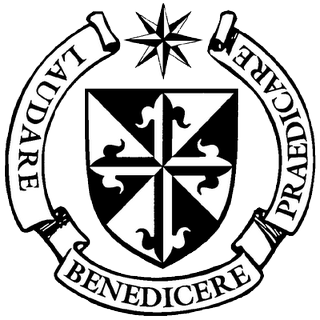
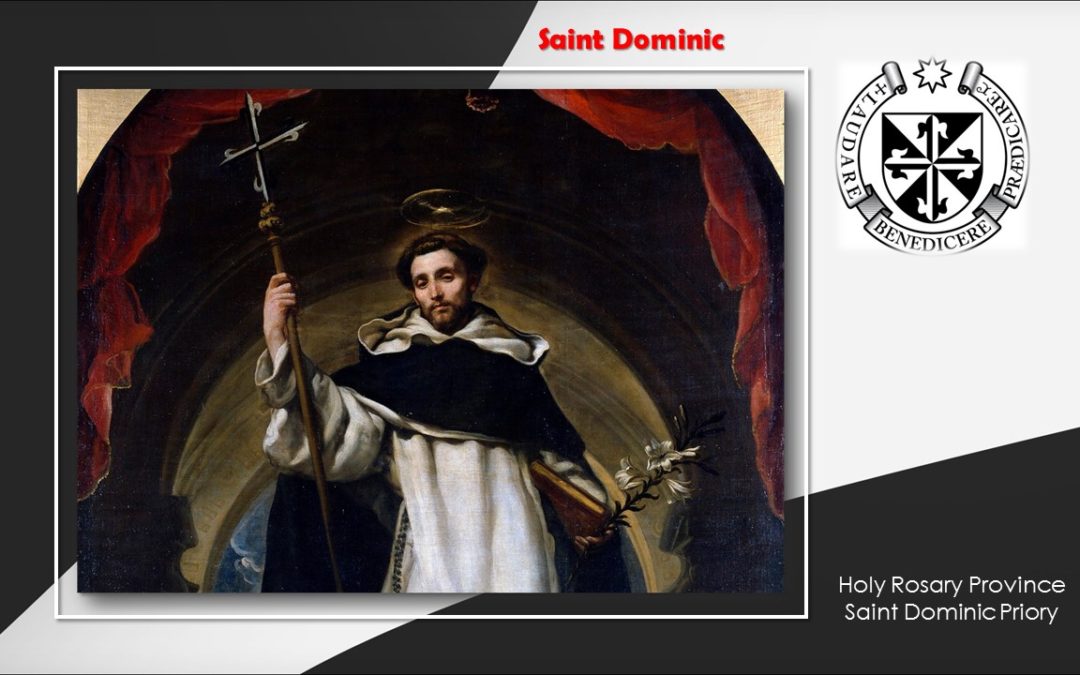

 strategy to improve education leveraging the power of ICT; whereas the‘Classroom 2012’ project focused on building the infrastructure and developing a culture of using technology in the school, this project is intended to affect teaching and learning through ‘Research-based learning’ approaches.†said Dr. Salcedo “Although more prevalent in colleges and universities, we will adapted many of the processes and techniques at the primary and secondary school levels, aiming to develop not only mastery of subject components but also to develop the student’s full range of intellectual, social, and emotional skills in context with real-world issues. One of the teaching and learning techniques that our teachers are already using is the ‘Flipped Classroom’ approach.â€Â Â
strategy to improve education leveraging the power of ICT; whereas the‘Classroom 2012’ project focused on building the infrastructure and developing a culture of using technology in the school, this project is intended to affect teaching and learning through ‘Research-based learning’ approaches.†said Dr. Salcedo “Although more prevalent in colleges and universities, we will adapted many of the processes and techniques at the primary and secondary school levels, aiming to develop not only mastery of subject components but also to develop the student’s full range of intellectual, social, and emotional skills in context with real-world issues. One of the teaching and learning techniques that our teachers are already using is the ‘Flipped Classroom’ approach.â€Â  
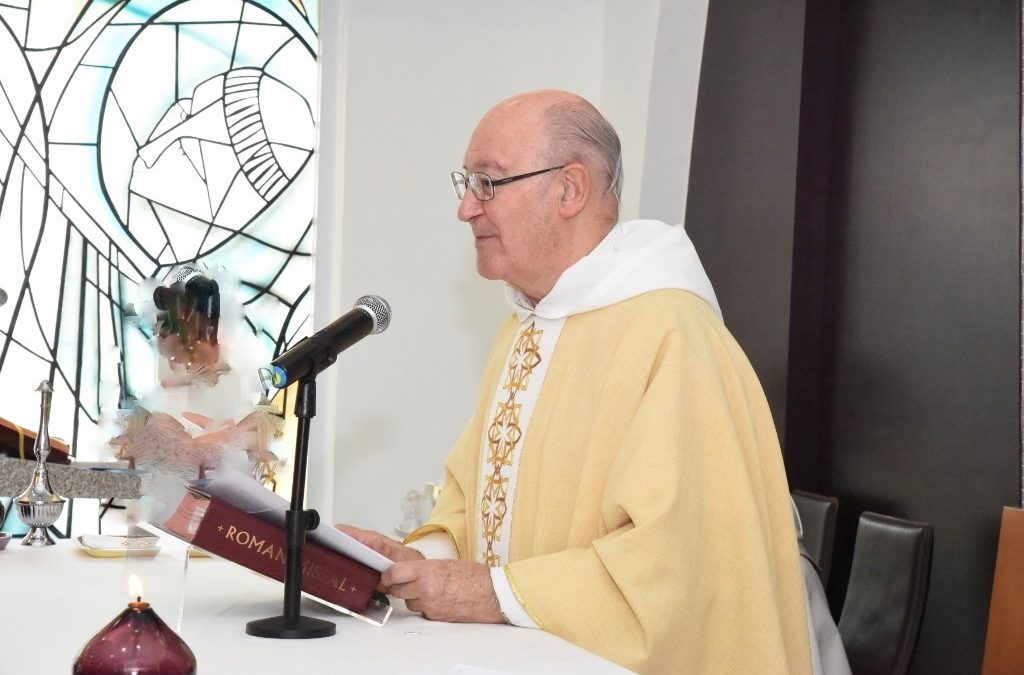
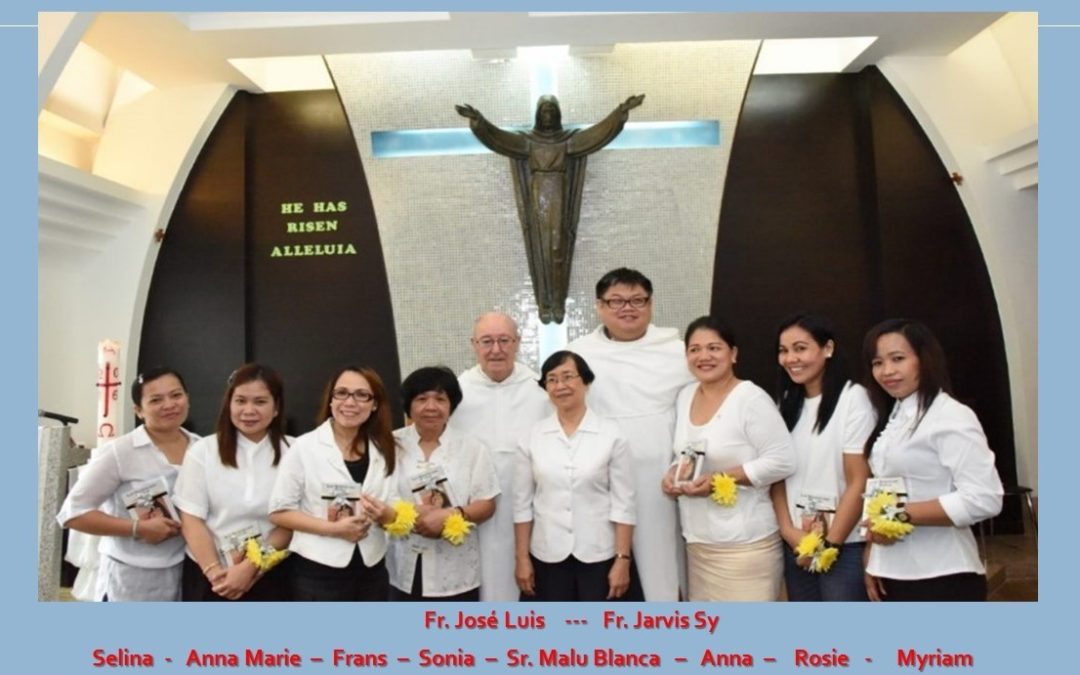
 Â Â Â Â Â Â
      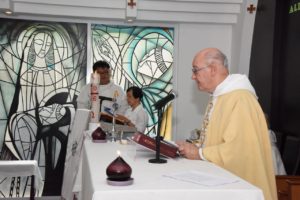
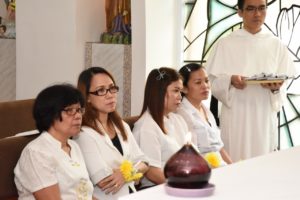 Â Â Â Â Â Â Â
       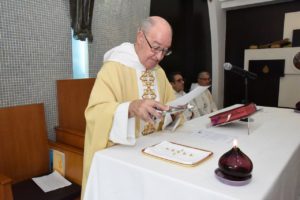
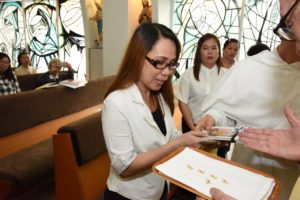 Â Â Â Â Â
     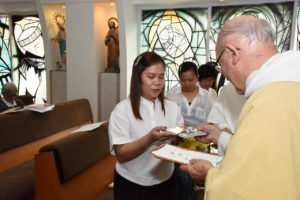
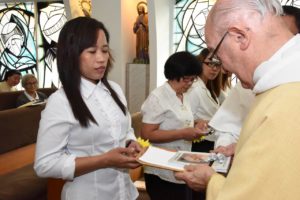 Â Â Â Â Â
     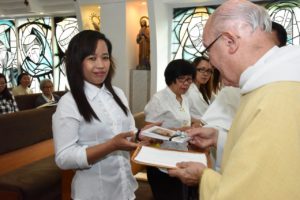
 Â Â Â Â Â
     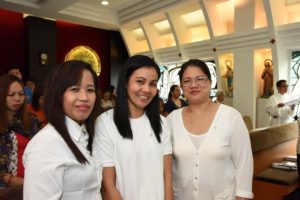
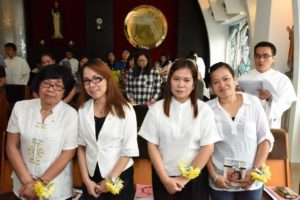 Â Â Â Â Â
     
